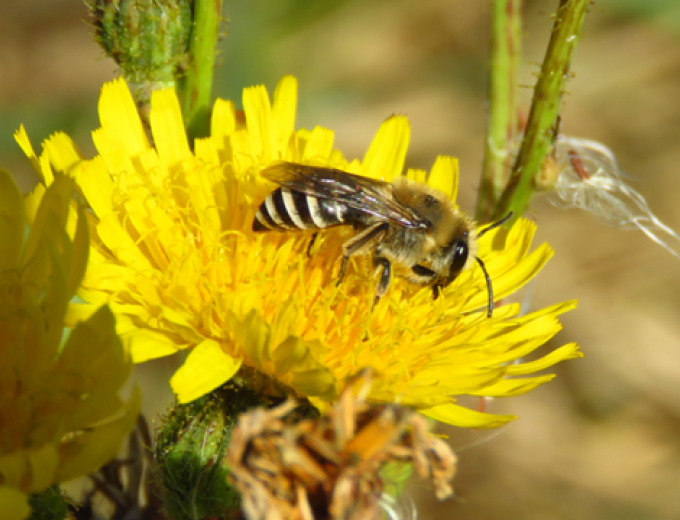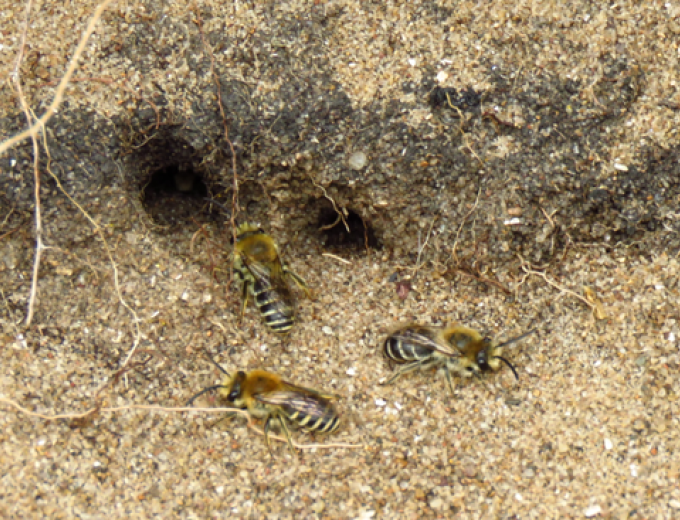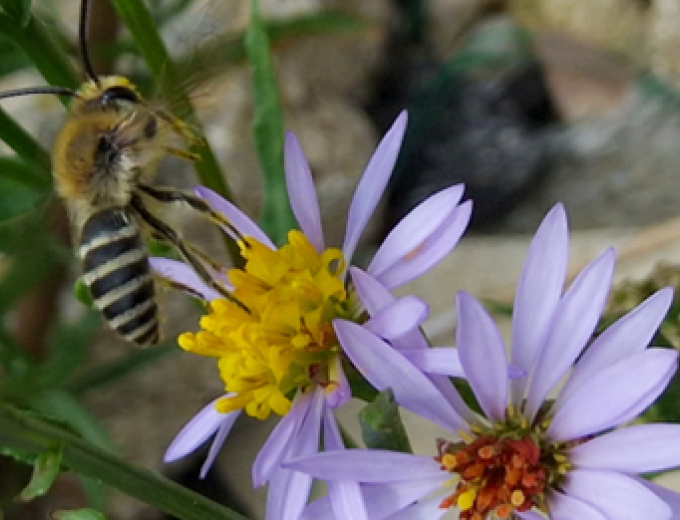This Solitary Bee Week, we’re taking a closer look at the Sea Aster Mining Bee (Colletes halophilus).
This is a rare solitary species of mining bee which exclusively occupies coastal habitats, especially saltmarsh environments. The species is known to have a restricted distribution within the UK, with sightings recorded on the coastline at Spurn Point and further to the south east of England. The UK supports nationally important populations, with the bee restricted globally to the North Sea coastline.
The Sea Aster Mining Bee is listed as Near Threatened on the International Union for the Conservation of Nature (IUCN) Red List, as well as being recognised as a United Kingdom Biodiversity Action Plan (UKBAP) priority species. It is also listed as a species of principal importance in section 41 of the Natural Environment and Rural Communities (NERC) Act 2006. As their name suggests, pollen from the Sea Aster plant is known to provide up to 95% of the larval food for the bees. Factors such as rising sea levels as a result of climate change mean their food plant, Sea Aster, is threatened alongside habitat loss. Whilst it is currently slowly expanding in its distribution, population trends remain fluctuating.
The National Biodiversity Network (NBN) shows that there have been 284 records nationally, which have occurred between 1935 and 2022. Within our local area, however, this is reduced to just 52 records, which have all occurred between 1980 and 2022.
Despite being a solitary species of bee, the Sea Aster Mining Bee tends to aggregate when nesting, with many burrows of individually nesting females covering an area. They show a preference for south-facing slopes which have a low coverage of vegetation and are made up of substrates which contain high concentrations of sand. They are active from mid to late August until late October, even occasionally occurring as late as November. Nest building involves the female constructing a burrow to lay several eggs. The larvae of the bee will overwinter within the burrows and emerge the following year to repeat the cycle.
The Sea Aster Mining Bee has been the focus of a Buglife project, which sought to understand this species’ specific habitat requirements. Their findings confirmed that the bee will exploit both natural and man-made habitats if forage and suitable nesting sites are present in some way - this is good news for the species, as it means relatively simple measures can be taken to help prevent their decline, as long as the Sea Aster plant is present.
Records of the Sea Aster Mining Bee can be submitted to your local LERC or national schemes such as BWARS (the Bees, Wasps & Ants Recording Society).
Written by Phill, Aquarist at The Deep.






